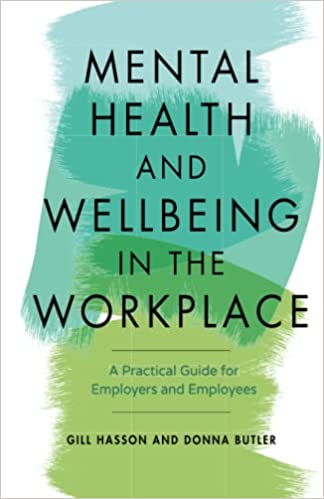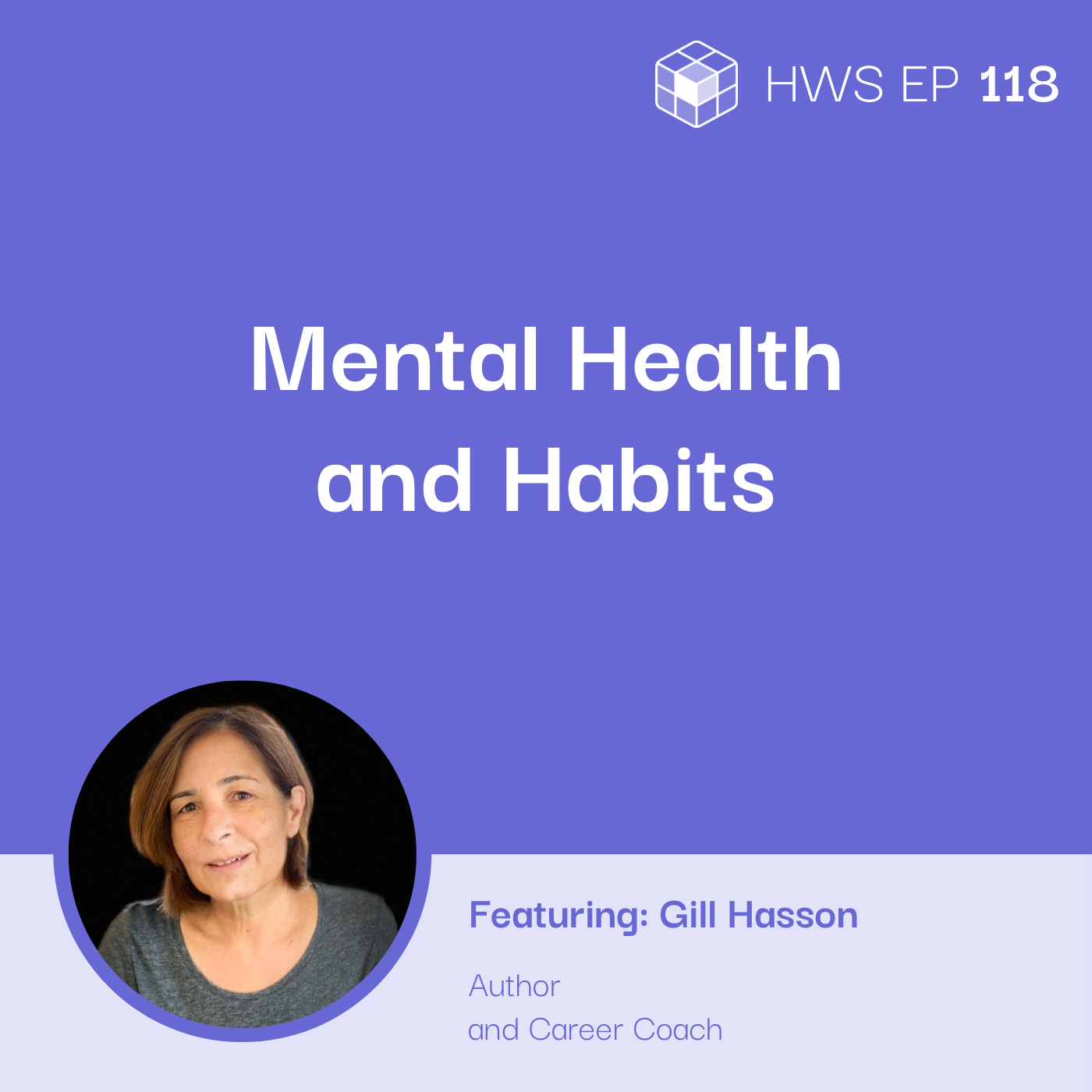Listen on:
Table of Contents:
Problem: How do you support your employee’s mental health and wellbeing?
According to a study by the Workforce Resilience Council and International SOS, more than half, or 56% of organizations, plan to increase spending on the physical and mental health of their employees. Public awareness and government attention regarding mental health and wellbeing at work have both increased, especially during the pandemic. Employee mental health is an issue that employers struggle to address, despite a few recent developments and initiatives that companies have been taking. How do you keep yourself and your employees mentally well and healthy?
I would say, and I think the key is that word, habits. Because a habit is something that you do regularly, anything positive that you do regularly is going to support your wellbeing. Anything negative that you do regularly is actually going to undermine your wellbeing. So yeah, the more habits, the more things you can do on a regular basis that are positive, then that you’re on the right track.
Personal Journey to Mental Wellness: Seek Your Life’s Purpose and Enjoy Simple Pleasures
According to Aristotle, “Happiness is the meaning of life, the purpose of existence, and the end of human existence.” It’s been 2,000 years since the philosopher spoke about living a purposeful life, and current research echoes his insights. Finding your purpose in life helps you maintain your mental health.
For example, Martin Seligman, a positive psychology professor who recently died, actually. He came to the same conclusionS, and that is that you need to have meaning and purpose in your life. Not only do you have to have meaning and purpose, you also have to have small pleasures.
Tip # 1: Discover What Defines Your Life
Finding out what keeps you going is important. That doesn’t have to be your career. There are many things outside of work that can make your life meaningful. You could choose something related to your family, a hobby, or something you’re passionate about. Doing things that make you happy and fulfilled is crucial.
You could have a particular job, a career. You could have a passion or an interest that’s got nothing to do with your relationships or your work. So, it’s about discovering for yourself, what’s the sort of thing that really makes you tick and that helps to define your life, that’s your meaning and purpose. When you’ve got that, then you can do things that help to drive that.
Tip #2: Establish Personal and Social Values
To find your purpose, it’s essential to establish what are the things you value the most. Consider values that apply to you and how you relate to others. If you’re not sure where to begin, you can make a long list. You can then pick out the five most important ones. So, what’s the difference between social and personal values?
So the personal values are the things that wouldn’t matter if they were the only person in the world. This is what’s important to them, for themselves. Social values are about how they relate to other people. And people generally have a mix of social and personal values. And that really is, I think, is the starting point for what can give you meaning and purpose in life and give you goals and hope.
Tip # 3: Use These Values as Filters When Making Decisions
The majority of our stress and worries come from making difficult decisions. These are decisions that have the potential to make or break the rest of our lives. These are decisions that can affect our personal relationships. As you find yourself at this crossroads, use your personal and social values as a compass. Saying no may also be part of these tough decisions. Having a set of values can help to reduce stress in such circumstances.
Whenever I make decisions for a goal that I’m setting, for the goal for the year, for the quarter, or whatever, I always run it through this filter here. Which, you know, are my mission, vision, and values. My filter is, “Is it in line with my vision? This isn’t part of my mission. Is it part of my core values?” And this helps me to filter out and say no to things that are not in line. Saying no is really a hard thing to do. But if you have this filter in your life, it makes it much easier to become and stay the person that you want to be or that you aspire to be.
Supporting Employee Mental Health: Creating a Culture of Openness
It’s crucial that you integrate openness about mental health into the team culture. And this needs to be practiced by everyone, including members of the leadership team. Integrating this means making it part of everything that you do. Make these things visible in your company newsletters, activities, and initiatives. Encourage managers and supervisors to reach out to their teammates about their workload, their relationships at work, or things that may be causing stress.
You would be working in an organization or a setup where there was already a culture of openness around wellbeing and mental health. So I think; therefore, it’s really important that there’s an ongoing awareness. It can be really simple things like putting up posters about wellbeing and mental health in your workplace, having information, ideas, and advice about wellbeing and mental health, and managing stress in staff newsletters, staff magazines, intranet pages, maybe inviting a speaker on mental health to an event as part of activities around diversity, disability, mental health. I think that as a supervisor or manager, or team leader, you need to be staked speaking regularly with staff about how they’re doing, how they’re doing with their workload, their relationships at work, and what may or may not be becoming stressful.
Tip # 1: Practice Sensitivity and Awareness
Getting to know your teammates will help you notice when something isn’t right. You can become familiar with your teammates’ quirks and behaviors by being aware of them or being sensitive to them. Behavior changes are often an indication of stress and struggle. Watch out for these signs:
- Increased frequency of leaving earlier and later than usual
- Over or under eating
- Going out for more breaks than usual
- Extreme silence or sudden temper
- Drop in the usual performance
I think if you know them reasonably well, then you’ll recognize that they’re not being themselves. There’s something when they’re behaving differently from how you’re used to them behaving. So, they might not be coming into work on time, or leaving earlier, or leaving later. They might be snappy. And with other people, you might notice that they’re overeating or not eating. They’re going out for more breaks than normal. So, any sort of behavior that you think, “No, that’s a bit odd.” Or someone else flags it up that just feels like. “Hmm. That’s not like them.” And so, the key thing is actually to be aware of your colleagues and employees.
Tip #2: Normalize conversation about mental health within the teams
For employees to manage better, it is crucial to normalize conversations about wellbeing and mental health. Conversations about success are often normalized in order to demonstrate team members’ assertiveness, independence, and ability to deal with pressure. Instead, encourage your employees to share whenever they’re feeling lost or challenged in order to avoid stress and breakdowns.
Normalizing conversations about how people are feeling is very important. Because, over and over again, once people start to be a little bit open about how they’re feeling about things, there’s always someone else who says, “Oh, thank goodness you said something because I’m feeling like that too,” about, a particular situation. So, that really just opens things up, so that’s really important to be able to share.
Tip #3: Train your managers and supervisors to handle conversations about your employee’s mental health
There is often a desire to promote an open culture, but managers do not know how to handle difficult conversations. Employees may clam up rather than open up because of this. Begin by encouraging managers to tell employees they will be open when they are ready to talk. It happens sometimes that teammates suffering from trauma, stress, or depression do not speak up because they are not yet ready to talk. In addition, if abuse occurs or if professional intervention is required, having a list of contacts to organizations handling such situations will be helpful.
There are all sorts of training courses, and this is something that you may have to look for yourself. And then go to your own manager or supervisor and say, “Look, I’ve identified this training that I could go on.” That would help me with better understanding the well-being and mental health of our employees. And how I could approach them if we’ve got any concerns. As a manager, you shouldn’t be expected to know it all. You’re not a psychotherapist. You’re not a trained health professional, but you could get some training that will make it easier for you.
Tip #4: Have a wellness plan in place
Companies should prepare for these scenarios by identifying the signs of burnout and incorporating programs into workflows and processes. There is no better treatment than prevention.
Free Resource: Download Wellness Action Plans at www.mind.org.uk
Something like the wellness action plan can help us recognize what are the signs that maybe things aren’t going so great, and they could slip out of control or completely overwhelmed. It’s important to be aware of those things as well. What are the things that you recognize are the triggers as well? You know, what sort of things triggers you off that could indicate that you’re on a downhill slope? And that you need to do something about it before things get worse?
Check out Gill Hasson’s Books

Mental Health and Wellbeing in the Workplace: A Practical Guide for Employers and Employees
Provides guidance for both employers and staff on promoting positive mental health and supporting those experiencing mental ill-health in the workplace

Other Books by Gill Hasson
Gill Hasson has 20 years’ experience teaching and writing on a range of issues to do with personal and professional development, mental health and wellbeing. She is the author of more than 22 books; the bestselling 'Mindfulness', 'Mindfulness Pocketbook', 'Emotional Intelligence' 'Positive Thinking' the Sunday Times bestseller 'How to Deal with 'Difficult People',
This interview is part of the How We Solve podcast. To hear more from industry experts who are solving everyday business problems, check us out on Spotify, Apple Podcasts, and on our website.
About the guest

Gill Hasson
Gill Hasson has 20 years of experience teaching and writing about personal and professional development, mental health, and wellbeing. She is the author of more than 22 books plus other books on the subjects of resilience, communication skills, and assertiveness.
How people can people reach the guest:
LinkedIn: Gill Hasson
Twitter: @gillhasson
Gill Hasson Faculty Bio on Cross Knowledge
Listen on:
